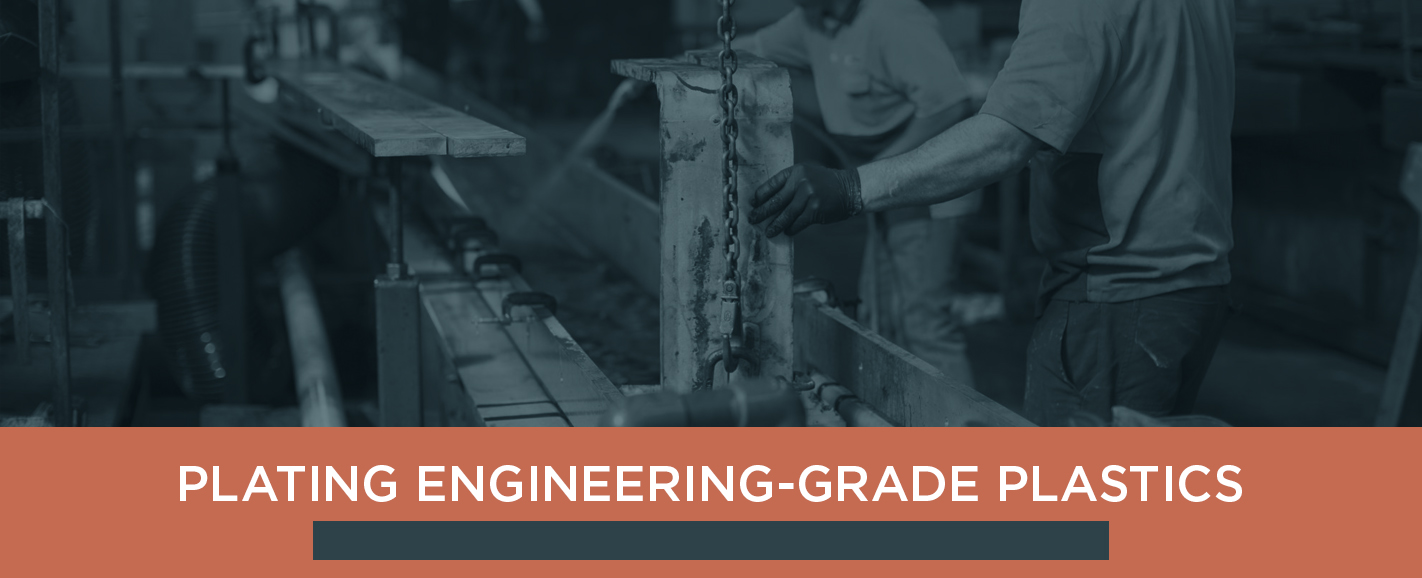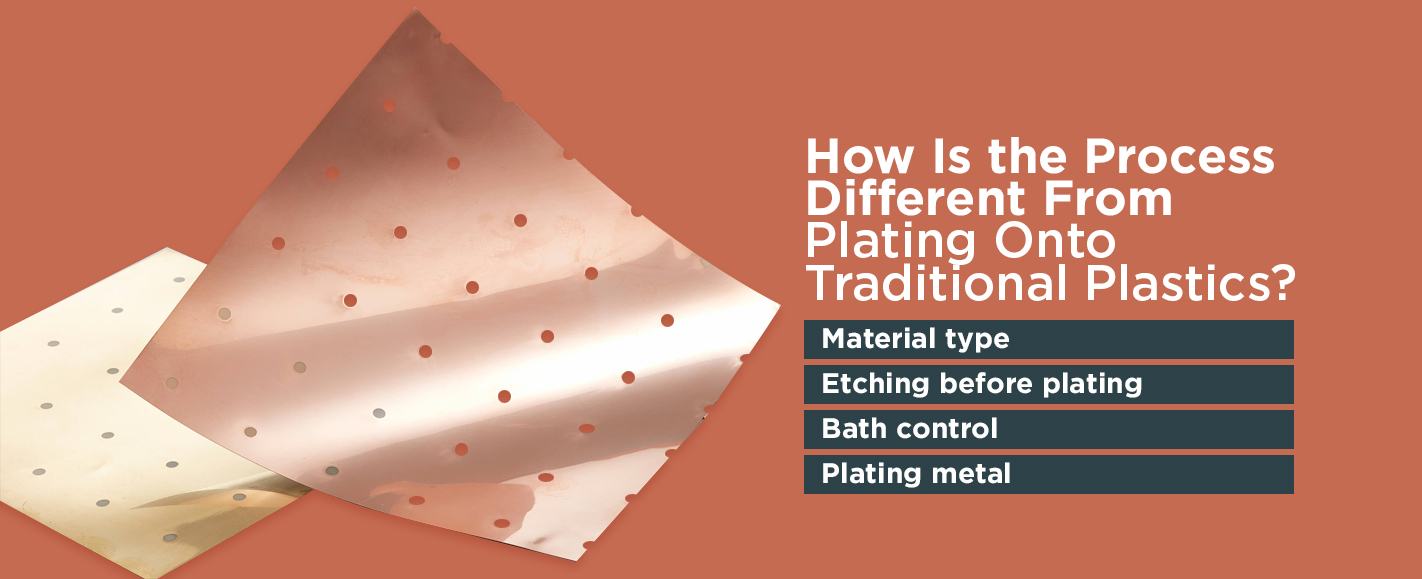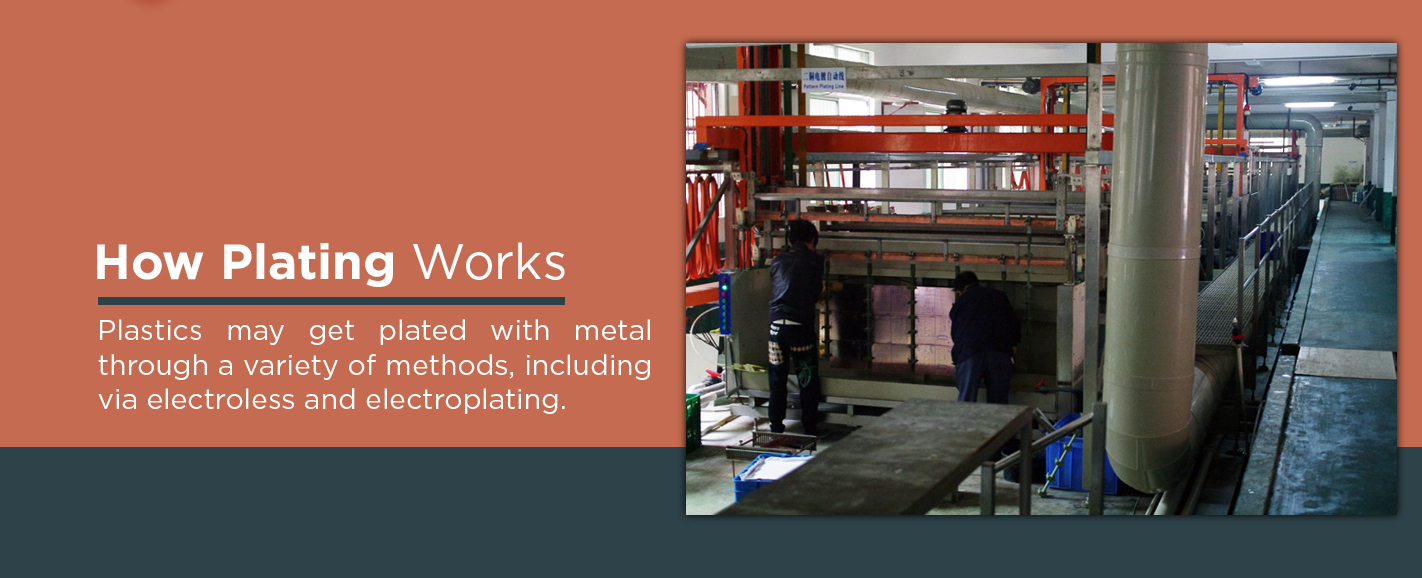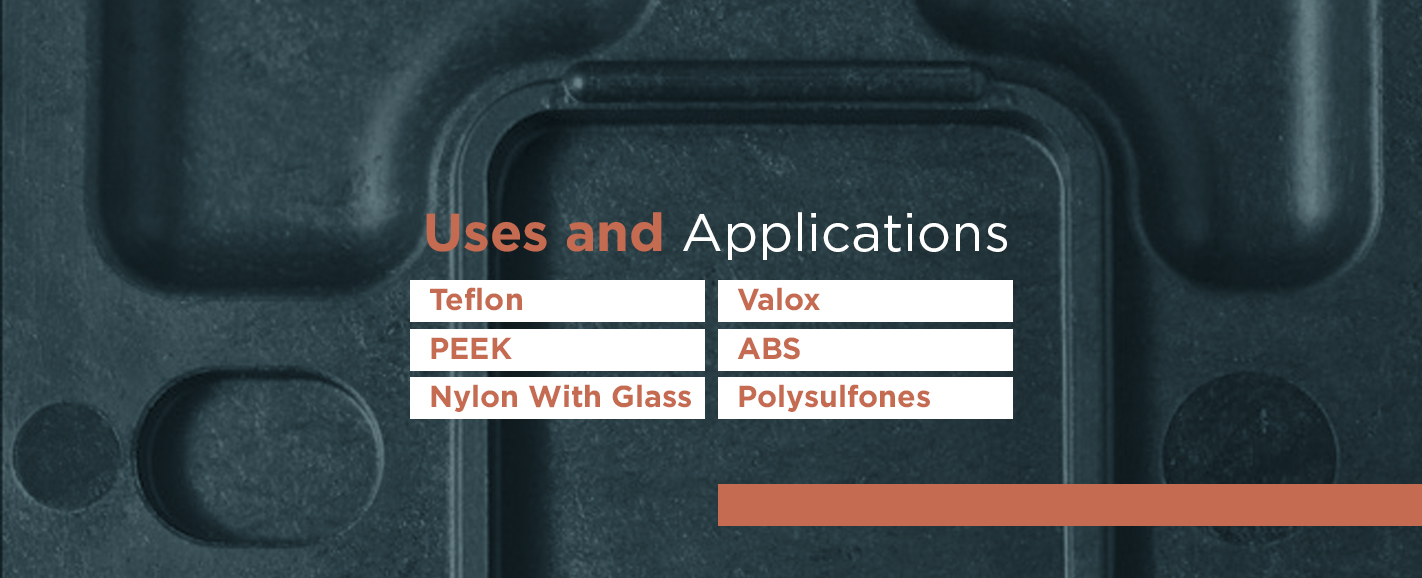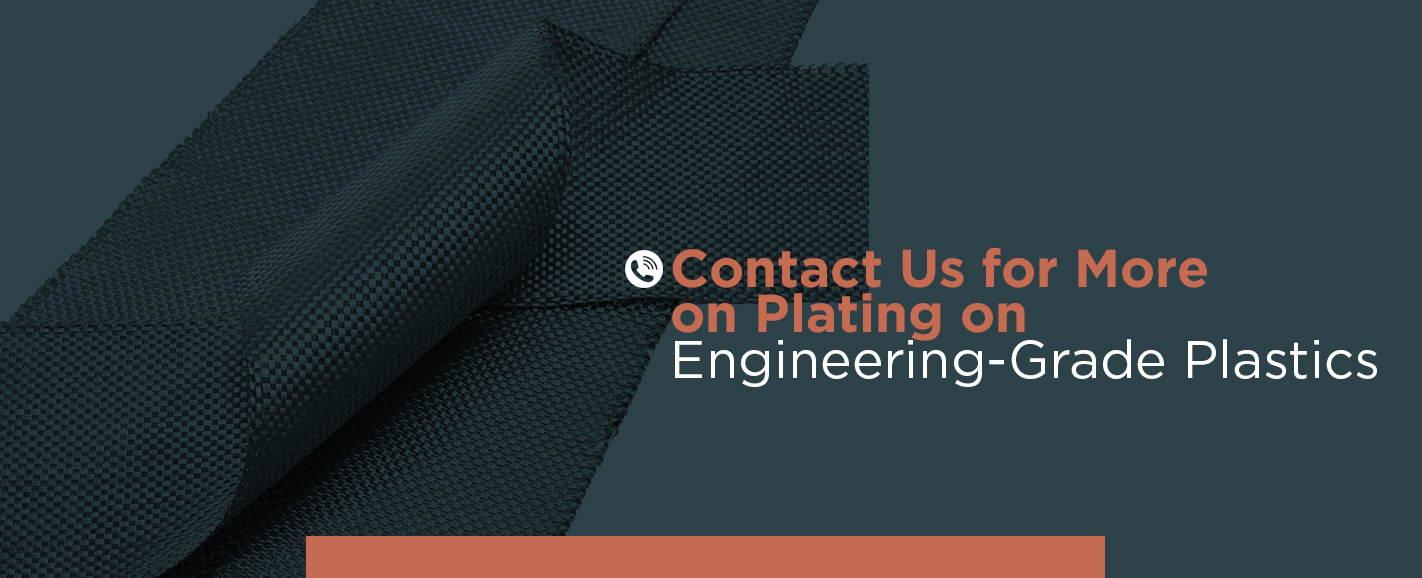Overview:
As strong as they are, engineering-grade plastics may occasionally need a boost in hardness, appearance or other qualities through plating. With innovations in surface treatments, such finishes are possible today. Discover how adding metallic coatings onto Teflon, PEEK and other engineering-grade polymers can make them better for a variety of applications. The process can also combine with 3D printing to achieve truly customized parts with the ideal combination of strength, weight and style. Innovations in the industry continue to push the envelope to make plated materials better than ever.
How Is the Process Different From Plating Onto Traditional Plastics?
Before looking at how plating onto engineering plastics differs from the process for coating traditional plastics, you must fully appreciate the differences between the base materials. Engineering plastics are designed to be tougher and last longer. They have been designed to have increased heat, chemical and impact resistance compared to traditional plastics. Parts such as car bumpers and children’s building bricks are made of engineering-grade plastics because these kinds of goods require more durability than traditional polymers such as that used for disposable eating utensils.
The problem with engineering plastics’ extra strength comes when these materials need metal plating. Some types cannot be plated at all, while other types of engineering plastics require additional steps to make the surface ready to accept the coating. These are just a couple of the differences between the processes. Other ways engineering plastic plating stands apart from the steps for finishing traditional plastics are the following:
- Material type: The type of material is critical to whether it accepts plating. Some engineering materials cannot be plated. For example, Valox resins are very difficult to plate with any success. Other materials can only be plated if they are blended with more “plateable” materials.
- Etching before plating: Engineering polymers with inorganic filler materials are better for plating because the etching process creates better pores for the metal. These types of engineering-grade plastics require swelling and etching to form pores on the surface before the general plating process can continue.
- Bath control: Engineering plastics also require more careful control over the bath used for electroless plating. For standard plastics, the bath only needs the right balance of chemicals at the outset, but engineering plastics require more careful maintenance of the chemical bath components throughout the process.
- Plating metal: Not all metals are appropriate for plating onto engineering plastics. Some metals work better with certain base materials than others. For instance, with electroless plating, nickel adheres better to PEEK than copper does. On the other hand, copper and nickel work equally well when electrolessly plated onto PES, PEI or PSU.
While these differences are minor, they ensure adhesion of the metal onto the base material.
How Plating Works
Plastics may get plated with metal through a variety of methods, including via electroless and electroplating. Part of the electroplating process for plastics involves coating the base through electroless plating with a metal. This metal coating allows the electroplated finish to adhere. In some instances, only the electroless method is used for finishing the base material, especially in cases where a thin coating will suffice. Electroplating produces a thicker finish though it requires electricity and extra steps to do so. Compared to other means of plating, electroless is the most popular option for plastics.
Regardless of whether electroless plating or electroplating is needed, some types of engineering plastics will require extra steps, as discussed above.
Electroless Plating on Plastics
There are several steps involved in electroless plating. Many of these steps overlap with electroplating. The process for electroless plating, though, does not require electricity. For applications which only need a thin, even coating of metal on the material, electroless plating will suffice.
- Surface preparation: Preparing the surface for accepting the plating means thoroughly cleaning it. Additionally, rubbing sandpaper over the base material can rough up the surface, which increases the surface area. The greater surface area allows for better coverage and adhesion of the metal coating.
- Etching: The next step requires putting even more abrasions on the surface through chemical etching or conditioning. To prepare the surface, the plater submerges it in a solution that includes sulfuric acid and either chromic acid or hydrofluoric acid, depending on what is plated.
- Neutralizing: The piece gets neutralized in a reducing agent to remove any of the excessive oxidants.
- Activation: Activation of the surface begins with a coating of a catalyst, usually a palladium-tin colloidal suspension. This catalyst coating allows for proper bonding of the metal onto the base.
- Acceleration: During the acceleration phase, which may also be counted as a part of the activation step, the piece gets either an acid or base bath to remove excess catalyst from the surface.
- Electroless coating: Finally, to coat the piece electrolessly, the part is placed into a chemical bath of metal salts, a reducing agent and a medium. The makeup of the bath, submersion time and bath temperature are based on the plastic being coated and the metal used for the coating. Typical electroless baths occur between 45 and 65 degrees Celsius.
Get the latest industry information and stay up to date with plating and metal finishing solutions.
Sign Up for our Newsletter
Electroplating of Engineering Plastics
Electroplating is a process that requires a conductive surface on the base before applying the coating. This need for a conductive surface becomes problematic with plastics, which do not conduct electricity. One of the first plastics to get electroplated was an engineering-grade plastic, acrylonitrile-butadiene-styrene (ABS). In 1963, this material was introduced and electroplated shortly after that. The process involves several steps:
- Preparation: To ready the surface, the ABS piece is submerged in a bath of chromic acid mixed with sulfuric acid. This etches the surface enough to allow activation.
- Activation: Activating the piece requires two more dips. First, the piece is dipped into stannous chloride. Second, it gets put into palladium chloride. Now the piece is ready for its conductive coating.
- Electroless Coating: Either a coating of nickel or copper is applied chemically through electroless plating on the substrate. This will create a conductive surface the electroplated material will adhere to, but ultimately, it is not as secure an adhesion as a metal finish onto a base metal.
- Electroplating: The metal-covered base material connects to a negatively charged wire, and the metal for coating connects to the positively charged end. Both are submerged into a bath containing a mixture with the same type of metal used for coating. When electricity flows through the wires, it will pull off ions of the finishing metal into the liquid, which deposits the ions onto the negatively charged base. Introducing electricity to the plating process can increase the thickness of the coating by 10 times.
Uses and Applications
When plating, the type of base material makes a difference. For instance, flexible plastics with too much physical movement will not plate well. Because flexible plastics are not good options for metal coatings, engineering-grade materials are often used. Engineering plastics, though, are constructed to be so tough that some require extra steps for plating or do not plate well at all. Here are some uses and applications for engineering-grade plastics:
1. Teflon
Teflon is the brand name for polytetrafluoroethylene (PTFE). While this material has many positive attributes on its own, some of these make plating it difficult. PTFE is impervious to most solvents as well as heat, oil and chemical resistant. With all these resistances, PTFE can still accept a metal coating. Nickel can be electrolessly plated onto PTFE. The plated PTFE retains its low friction level, allowing it to be used to line molds for clean releases.
2. PEEK
PEEK, also known as polyetheretherketone, is a super engineering plastic with heat resistance over 200 degrees Celsius. This durable plastic adheres better to nickel when electrolessly plated than it does to copper. Compared to other conventional plastics, PEEK offers greater strength and temperature resistance. It is also incredibly lightweight. Due to the extra toughness of this plastic, it can be used in military and aerospace applications and other areas where strength and low weight are desirable.
3. Nylon With Glass
On its own, nylon cannot be plated. During the swelling phase, the nylon loses its form. Adding glass to the nylon’s structure, however, gives the material the added strength necessary for plating. With glass, nylon is stiffer, harder and less susceptible to the temperature changes that frequently occur with plating. With a harder structure that can stand more temperatures than non-filled nylon, glass-filled nylon becomes a possible option for plating.
4. Valox
Valox — polybutylene terephthalate — has numerous uses including fiber optic tubes and electrical components, but none of these can be plated. The reason Valox is resistant to plating is the same reason it is such a desirable engineering plastic. This material resists damage from heat and chemicals, both of which render it unusable for electroless plating. If a base layer of metal cannot be applied to the plastic through electroless plating, it also cannot be electroplated. Currently, accepted methods of evenly coating Valox with a metal that adheres appropriately have not been discovered.
5. ABS
ABS is one of the oldest plastics plated. This material is durable and versatile. It also accounts for 90 percent of plated plastics. As a frequently used material for 3D printing, ABS can be used in customized projects that require printing and plating. Metals that plate onto ABS well include copper, nickel and gold. Automotive part builders frequently take advantage of this plated material for its durability and metalizing ability.
When combined with polycarbonate (PC), ABS is less likely to have metal coatings adhere to it. Though combining PC with ABS increases the latter’s strength, hardness and temperature resistance, adhesion of the coating drops as the amount of PC rises. To avoid severe adhesion problems, the ABS amount, when combined with PC, is typically capped at roughly half of the ABS-PC’s composition.
6. Polysulfones
Polysulfone (PSU) is a highly stable engineering plastic that resists acids, non-polar solvents and oxidizing agents. PSU often appears as a component of medical supplies and food service devices. Due to its resistance to chlorine and elevated temperatures, PSU is used in materials that directly contact food or water, such as coffee makers. This material’s durability means platers must take an extra step to ensure the surface is adequately etched. With PSU, natural resins can be used for this step. For plating, both copper and nickel adhere equally well to PSU when applied through electroless plating.
Sharretts Plating Company: The Best Choice for Your Engineering-Grade Plastic Plating Needs
We’ve been in the surface treatment business since 1925. Over those decades, we have learned a lot about the best practices for finishes. We also continue to work toward developing new methods of plating.
Among our innovations are a novel approach to electroplating onto plastics. We have developed an intimate knowledge of the types of engineering-grade polymers that are best for plating and those that require some work. Our experts can work with you on achieving your project goals with the right base materials and coatings for the best finish. You can trust us to use the best metals for plating onto your engineering plastics.
Because engineering plastics cost more to produce, you want to be assured of getting the best coating the first time. We will partner with you to help you find the materials you need most for your final result. Do you need a coating on your 3D printed item? Let us know what types of engineering-grade materials you are using, and we will help choose the coating for the exterior that adheres best without sacrificing the attributes you desire in the result.
When you want expert advice, turn to a company that has been in the business for almost a century. At SPC, we have the expertise to handle any project requiring plating onto engineering plastic you may have.
Contact Us for More on Plating on Engineering-Grade Plastics
Turn to an innovator in the industry when you need answers about electroplating on plastic. We can respond to any question on plating you may have. If you have something more specific you want to address concerning your project, we can also help you with both your problem and completing the project. Contact us at SPC for anything you need to know about plating or finishes on engineering plastics. We are here for you and your business as we create the surface treatments you require.


